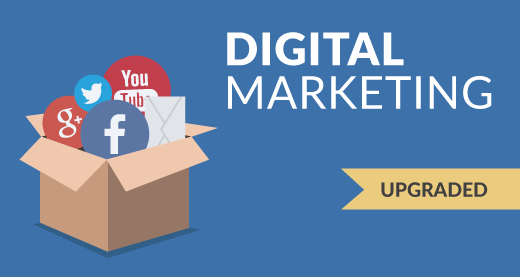

Marketing is a powerful tool that businesses use to connect with their audience, build brand awareness, and drive sales. But not all marketing strategies are the same. Depending on the target audience, budget, and objectives, businesses choose different advertising methods. Three major approaches dominate the marketing landscape: Above The Line (ATL), Below The Line (BTL), and Through The Line (TTL) advertising. Understanding the differences between these methods can help businesses create more effective marketing campaigns.
- Above The Line (ATL) Advertising
ATL advertising refers to mass media marketing strategies that aim to reach a broad audience. These campaigns focus on brand awareness rather than direct sales. Large corporations often use ATL advertising to establish their presence in the market.
ATL is a great choice for businesses looking to create a lasting impression on a wide audience. It helps in strengthening brand recognition over time.
Key Characteristics of ATL Advertising:
- Wide Reach: ATL campaigns are designed to target a large, diverse audience, often nationwide or globally.
- Brand Building: The primary goal is to create awareness and reinforce brand identity rather than driving immediate sales.
- Expensive but Effective: ATL advertising requires a significant budget but offers high visibility.
- Difficult to Measure: Since ATL campaigns are broad, tracking direct conversions is challenging.
Common ATL Advertising Channels:
- Television Ads: Commercials aired on TV channels to reach millions of viewers.
- Radio Advertising: Audio advertisements played on radio stations, reaching diverse demographics.
- Newspaper & Magazine Ads: Print ads in leading publications that attract a vast readership.
- Billboards & Hoardings: Large, eye-catching advertisements placed in high-traffic areas.
- Below The Line (BTL) Advertising
BTL advertising takes a more targeted approach, focusing on specific consumer groups. Unlike ATL, which aims for brand awareness, BTL marketing is designed to generate measurable engagement and direct conversions.
This strategy works well for businesses that need direct interaction with their customers. It enhances personalization and customer engagement, leading to better conversions.
Key Characteristics of BTL Advertising:
- Highly Targeted: BTL campaigns are aimed at a niche audience with tailored messaging.
- Engagement-Oriented: It involves direct communication with customers, increasing brand interaction.
- Cost-Effective: BTL marketing typically requires a smaller budget than ATL strategies.
- Easier to Measure: Since BTL focuses on direct interaction, results are more quantifiable.
Common BTL Advertising Channels:
- Email Marketing: Personalized promotional emails sent to potential and existing customers.
- Social Media Marketing: Engaging content, ads, and influencer collaborations on platforms like Instagram, Facebook, and LinkedIn.
- Search Engine Marketing (SEM): Paid ads on search engines like Google to capture relevant leads.
- Direct Mail Campaigns: Sending brochures, catalogs, and offers directly to customers.
- Event Sponsorships & Exhibitions: Brand activations through trade shows, sponsorships, and in-person marketing.
- Through The Line (TTL) Advertising
TTL advertising combines both ATL and BTL strategies to create an integrated marketing approach. This method ensures broad brand awareness while also targeting specific consumer groups for conversions.
TTL marketing is an ideal solution for businesses looking for a balanced approach. It leverages the strengths of ATL and BTL while allowing flexible strategy adjustments.
Key Characteristics of TTL Advertising:
- Hybrid Approach: It blends the reach of ATL marketing with the precision of BTL strategies.
- Brand Awareness & Sales Focused: TTL campaigns aim to increase visibility and generate measurable business results.
- Multi-Channel Strategy: Businesses use both offline and online media to maximize engagement.
- Highly Adaptable: TTL allows for real-time adjustments based on consumer response.
Common TTL Advertising Channels:
- Digital Marketing Campaigns: A mix of social media ads, SEO, PPC, and content marketing.
- Television & Digital Ads: Running TV commercials alongside YouTube and social media video campaigns.
- Retail Promotions with Online Support: In-store promotions backed by digital advertising for a seamless experience.
- Influencer Marketing & Mass Media: Partnering with influencers while also running billboard and print ads.
Which Advertising Method is Right for Your Business?
Choosing between ATL, BTL, and TTL depends on your business goals, budget, and target audience.
- If your goal is to create massive brand awareness, ATL advertising is the right choice. Large corporations, such as automobile brands and FMCG companies, rely on TV, radio, and print ads to maintain visibility.
- If you want measurable and direct sales, BTL advertising is ideal. Startups and small businesses often benefit from social media marketing, email campaigns, and local promotions.
- If you want a balanced approach, TTL advertising is the best solution. It allows businesses to build brand identity while focusing on conversions through digital marketing and offline activations.
Final Thoughts
In today’s competitive market, businesses must carefully choose their advertising strategy to maximize their impact. Whether it’s the broad reach of ATL, the targeted precision of BTL, or the comprehensive approach of TTL, each method plays a crucial role in marketing success. Understanding these differences helps in crafting a marketing plan that aligns with your objectives and budget.
For expert guidance on effective marketing strategies, visit Aditya InfoTech to explore innovative solutions that can take your business to the next level.
Businesses choose different advertising methods depending on the target audience, budget, and objectives


